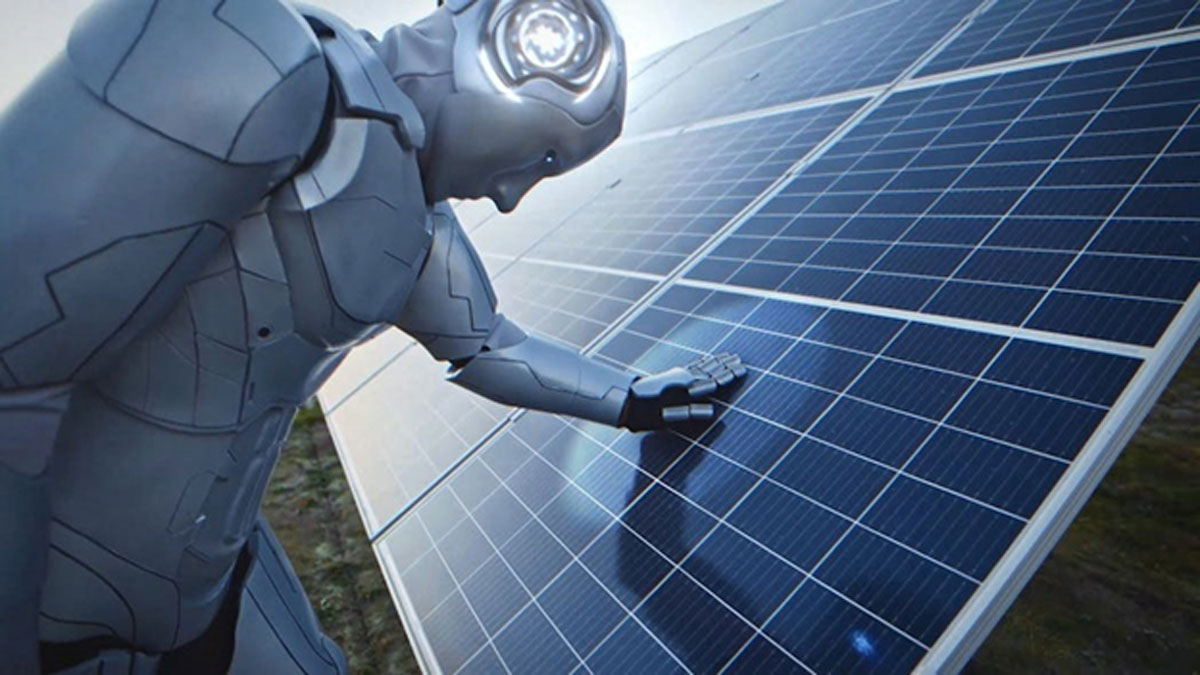AI Aims for Real: Artificial Intelligence and its Role in the Microgrid-Distributed Energy Future
Oct. 6, 2023
What is AI? A simulation of human intelligence enacted in a machine, it has the potential to revolutionize the deployment of distributed energy resources and microgrids, making them more reactive to real-time conditions.

The true story of artificial intelligence (AI), for all the frenzied publicity, good and bad, has yet to be told. The debate around AI is focused on the future in two ways — fear and promise. Will it be the angel of commerce, the greatest efficiency and beneficially communicative tool to completely revolutionize the world for the better, or will it be the devil?
Neither future prediction, heavenly or hellish, is likely going to be true. AI, for instance, is only as good as the historical data it evaluates and the specific algorithm it follows to truly work for the job intended.
It might change journalism, and it might change entertainment, but if it works as anticipated, it will definitely heighten the impact of digital transformation on microgrids, distributed energy sectors, and the whole of energy infrastructure.
How Will AI Drive Microgrid Expansion?
The sky is the limit if AI ever truly gets off the ground. Many microgrid-sector experts believe AI is here to stay and will offer quantifiable fruits for the labor it involves. Its work, and that of related tools such as machine learning (ML), will avoid bigger infrastructure problems and respond quicker to conditions around microgrids and distributed energy resources (DERs). AI could even provide instant knowledge for quick decision-making with less fear of human processing errors.
Only the bots know, right? Maybe, but experts from some of the industry’s leading companies are developing pretty good hunches.
“AI is a key driver in the rapid expansion and effectiveness of microgrids,” Sean McEvoy, chief product officer and president of North America operations for energy services firm GridBeyond, said to Microgrid Knowledge. “Microgrids often incorporate a diverse array of energy resources, including solar panels, wind turbines, batteries and backup generators. By optimizing energy management within these systems, AI dynamically adjusts the operation of these resources, ensuring efficient energy utilization and cost-effectiveness.”
Now you’re speaking the money language — efficiency and cost-benefit analysis. The bottom line is music to a chief financial officer’s (CFO) ears. Creative grid professionals are certainly captivated by the technological innovation around decentralizing the electricity power infrastructure, but eventually, it must pay off, too.
How Is AI Already Being Used in the Microgrid Sector?
AI, essentially, is using software to teach hardware to act on key information- much like humans do. The tools are not completely new, but their implementation and expansion are evolving exponentially in all facets of society. This societal focus on expanding and implementing AI is particularly so in the energy sector, where planners are trying to reach ambitious power sustainability and resiliency goals.
Microgrid controller technology firm PXiSE Energy Solutions has used machine learning as a way to improve optimization of power and load schedules, as well as DER management.
“In the power industry, predictive analytics has been used for a number of years to identify problems to take preemptive action on large pieces of equipment — think of wind turbine gearboxes,” said Joe Sullivan, head of sales-North America for PXiSE. “Most of these systems are only as good as the data that is fed to them.”
“I think where AI is going, leveraging unstructured data and operating with missing data, may support a larger number of use cases,” Sullivan added. “Optimizing many resources, especially EV/mobile load can be very challenging for a standard optimization. With enough data to train on patterns, AI/ML benefits the resource optimization and scheduling of these resources and learning patterns over time.”
Based on AI’s skillsets and its current deployment in grid-interactive microgrids, it’s ideal for microgrids, DERs, and virtual power plant applications. Those types of assets are the key defensive lines in bolstering island-able backup power, grid services, and peak demand response participation.
What Are the Challenges to Implementing AI in Advanced Microgrids?
AI can already take an instruction and churn out a fascinatingly human-like report or article. The problem, as several investigations have found, is that sometimes it makes up information, such as references to books that don’t exist.
AI’s expertise at exaggeration might make it eligible to run for Congress, but it won’t cut the mustard in the data analytics and interoperability worlds. AI’s software has to get better and expand its impact on energy efficiency, energy resource balancing, and other operational goals. As AI developers and distributed energy innovation companies attempt to improve AI in grid-interactive microgrids, it’s likely that the combination of machine learning and advanced forecasting will assist with improving future deployments.
Sometimes, the problem, though, is the hardware and equipment used in advanced microgrids as opposed to software. However, predictive maintenance has shown great promise for increasing site reliability, pointed out Camilo Calderon, senior product development engineer at DER infrastructure firm PowerSecure (a subsidiary of utility holding company Southern Co.).
“Renewable energy sources are abundant in dispersed and often separate locations,” Calderon noted. “Solar intensity is often uncorrelated with wind intensity, both spatially and temporally. Furthermore, leveraging relatively dispersed assets, such as electric vehicles, creates additional system complexity that must be accounted for to meet load requirements.”
“Understanding the dynamics of networked microgrids, which may be thought of as ‘systems of systems,’ will likely be the domain of the various techniques associated with artificial intelligence/machine learning,” Calderon added.
Is AI Cost-Effective for Advanced Microgrids?
The anticipated tidal wave of AI/ML may actually be more of a slow, rolling wave over time. It’s surely here and clearly picking up momentum, but it may take time and understanding to achieve those CFO talking points required by the money folks.
“Right now, AI/ML is hugely expensive and needs time, maybe more than expected,” PXiSE’s Sullivan cautioned.
In a revolution such as the energy transition, which promises future benefits yet lacks much historical input, AI may be unable to provide supportive models in the early stages of projects.
“There is a huge difference between systems designed for $1 billion PV+BESS (solar and battery storage) vs. a $15 million microgrid,” Sullivan said. “And yet, if the microgrid has a controllable or mobile load, the application of AI/ML and data collection may be more complicated than a large PV+BESS facility that has a large SCADA (supervisory control and data acquisition) system and data historian. So, the AI/ML has to be scaled appropriately, and cost has to be considered. Microgrids are very difficult.”
How Might AI Reduce Human Error in Microgrids?
The unique nature of microgrids creates both challenges and opportunities when it comes to the role of artificial intelligence. Microgrids are operated either in grid-connected mode or islanded mode in the event of a utility grid outage, with the manual switching between modes traditionally handled by a remote human operator. If your microgrid doesn’t have bumpless backup power, an operator who makes a mistake during the switching process can damage actuators and cause process issues.
Since many grid-interactive microgrids often rely on human response to switch modes, everything hinges on responsiveness and reliability, PowerSecure’s Calderon pointed out. Human error is always a vulnerability.
“This is encountered anywhere human factors are involved and is not unique to microgrid dispatch,” Calderon said. “These two factors—the human element and the overall qualities of the microgrid itself—exist in the context of the business need to satisfy contractual obligations.”
As businesses try to reduce the risk of human error and damage to their microgrids, AI represents an excellent opportunity for companies to accomplish these goals. With less human error, organizations can more easily meet their obligations and ensure they can maintain their operations even in the event of main-grid failure.
How Can AI Reduce Liability for Organizations With Advanced Microgrids?
Microgrids are investments in both reliability and, often, the announced sustainability and decarbonization goals of the client, whether it’s an industrial or commercial facility, military base, municipal public safety center, data center, or university campus. Like other DERs, microgrids can also play a role as a revenue tool in energy spot markets or demand response.
“Its performance greatly impacts relationships with clients,” Calderon added. “Nowhere else in the life cycle of an individual microgrid does one encounter a situation where AI-based software automation can play a key role in reducing overall liabilities and reputational damage.”

Camilo Calderon of PowerSecure
For the most part, these are use cases yet to be told, stories yet to unfold. AI is offering a new language for a new translation of how the distributed energy infrastructure interacts in a complex interplay between the environment, physical equipment, developers, and customers.
Microgrids aren’t new, but they are relatively young compared to where they are going. And they will be wise to learn to speak AI. And, conversely, AI must be ready for them.
This article was written by Rod Walton for microgridknowledge.com ↗
Choose PowerSecure for Advanced Microgrids
At PowerSecure, we’re always looking for ways to improve our distributed energy solutions. When you turn to us for grid-interactive advanced microgrids, we’ll design and install your distributed energy solution with scalability in mind to ready it for advances in AI and potential increases in your energy needs. We also provide power monitoring services backed by state-of-the-art software and AI to ensure your DERs are running at their best and your organization is prepared for potential severe weather or other emergencies.
Learn more about our advanced microgrids today. If you have any questions about our microgrids, please contact us.


